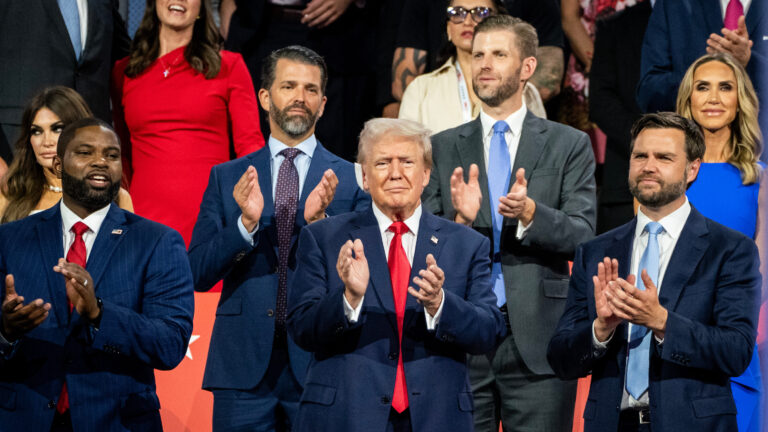Hook:
When World Liberty Financial (WLF), a crypto project connected to Donald Trump, promised to revolutionize the crypto world, investors had high hopes. But the reality turned out to be far from expectations.
The Big Dream and What Happened:
World Liberty Financial set out with a bold plan: to raise $300 million by selling 20% of its tokens, valuing the project at a whopping $1.5 billion. The idea was to make a huge impact in the crypto world. But as the numbers rolled in, the project fell flat, managing to raise just $13.5 million — less than 5% of its original goal.
So, what went wrong? Here’s a breakdown of the key issues:
1. Too Much Control to Trump’s Family:
The project revealed that 75% of the protocol’s revenue would go to a company linked to Trump’s family, creating doubts about the project’s fairness. On top of that, the Trump-related company was promised $337.5 million in tokens. This raised alarms among potential investors who started seeing it as a possible “cash grab” rather than a genuine crypto opportunity.
2. Lack of True Web3 Values:
Web3, the decentralized internet movement, is built on the principles of community and shared benefits. However, experts like Yat Siu from Animoca Brands pointed out that the Trump family didn’t seem to truly understand these values. This created distrust among people who believed in the spirit of web3.
3. Limited Access for Investors:
WLF’s token sale was only open to accredited investors in the U.S., meaning regular people couldn’t participate. This limited its appeal, shutting out the broader crypto community that thrives on inclusivity.
4. Shady History of the Founders:
Two of the co-founders, Chase Herro and Zak Folkman, brought more trouble to the project. They were involved in a DeFi project called Dough Finance that got hacked and lost $2 million. Plus, their controversial past, including legal troubles and questionable business ventures, cast a shadow over WLF, scaring off many investors.
5. Technical and Token Issues:
The technical aspects didn’t help either. The project’s website crashed during the token sale due to poor planning, which frustrated potential buyers. Also, the fact that WLF’s tokens would be locked for a year before they could be traded made the investment even less attractive.
6. Outdated Ideas:
The core of WLF was to launch a borrowing and lending platform on Ethereum using Aave’s technology. But experts noted that this idea was innovative years ago and didn’t offer anything new. It felt like WLF was trying to bring something old to the table and sell it as groundbreaking.
Why This Matters to You:
Understanding why WLF flopped is crucial if you’re interested in the crypto space, especially as a young person looking to make smart investments. The story of WLF teaches several important lessons:
- Key Word to Remember: Tokenomics – The structure of how a crypto token works is important. If too much control goes to a small group (like the Trump family in this case), people lose trust.
- Key Word to Remember: Web3 Ethos – It’s all about community, fairness, and sharing benefits. Projects that don’t embrace this may struggle to gain support.
- Key Word to Remember: Liquidity – If a token can’t be traded easily (like in WLF’s case, where tokens were locked for a year), it loses value for investors.
- Key Word to Remember: Due Diligence – Always research the people behind a project. If they have a questionable history, think twice before investing.
Final Thoughts:
World Liberty Financial’s downfall shows us the importance of transparency, fairness, and innovation in the crypto world. It’s not enough to have a big name like Trump behind a project; it must stand on solid ground. For anyone hoping to build a future in crypto, learning from WLF’s mistakes can help you avoid similar pitfalls and make smarter decisions in your own journey.
This article is important for expanding your knowledge in cryptocurrency because it shows how hype and promises aren’t enough — you need to look deeper into the details of every project. By understanding key terms like tokenomics and liquidity, and by researching the people behind a project, you can build a strong foundation for making smart investments in the future.



